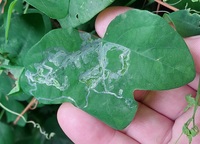
| Recorded by: Mark Basinger on 2025-07-24
New Hanover Co.
Comment: | 
| Recorded by: Mark Basinger on 2025-07-24
New Hanover Co.
Comment: |

| Recorded by: Mark Basinger on 2025-07-24
New Hanover Co.
Comment: | 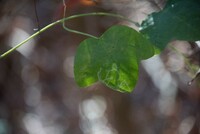
| Recorded by: Erka Mitchell on 2023-11-19
Wake Co.
Comment: iNat record - Photo and observation by Erika Mitchell, used with permission https://www.inaturalist.org/observations/192325536 |
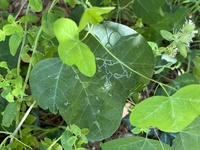
| Recorded by: Sarah Toner on 2023-07-23
Dare Co.
Comment: iNat record - Observation and photo by Sarah Toner, used with permission. https://www.inaturalist.org/observations/174549463 | 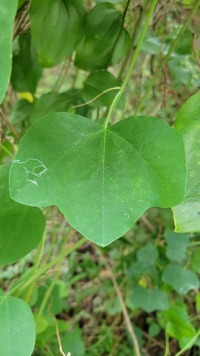
| Recorded by: Skadi Kylander on 2023-07-10
Pitt Co.
Comment: iNat record - Leaf-miner found in Passiflora lutea. Unable to confirm if the mine was occupied. ID help from Tracy Feldman.
This observation was also posted on iNaturalist: https://www.inaturalist.org/observations/172248550 |
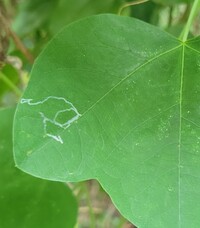
| Recorded by: Skadi Kylander on 2023-07-10
Pitt Co.
Comment: iNat record - Leaf-miner found in Passiflora lutea. Unable to confirm if the mine was occupied. ID help from Tracy Feldman.
This observation was also posted on iNaturalist: https://www.inaturalist.org/observations/172248550 | 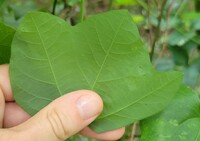
| Recorded by: Skadi Kylander on 2023-07-10
Pitt Co.
Comment: iNat record - Leaf-miner found in Passiflora lutea. Unable to confirm if the mine was occupied. ID help from Tracy Feldman.
This observation was also posted on iNaturalist: https://www.inaturalist.org/observations/172248550 |

| Recorded by: Tracy Feldman on 2020-07-26
Scotland Co.
Comment: Occupied leaf mine was on Passiflora lutea on July 26; turned red on July 28; cocoon on July 29; adult emerged on August 9. | 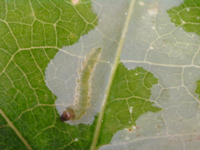
| Recorded by: Tracy Feldman on 2020-07-26
Scotland Co.
Comment: Occupied leaf mine was on Passiflora lutea on July 26; turned red on July 28; cocoon on July 29; adult emerged on August 9. |

| Recorded by: Tracy Feldman on 2020-07-26
Scotland Co.
Comment: Occupied leaf mine was on Passiflora lutea on July 26; turned red on July 28; cocoon on July 29; adult emerged on August 9. | 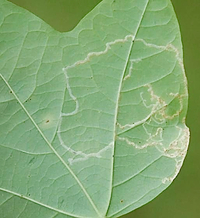
| Recorded by: Tracy Feldman on 2017-08-28
Scotland Co.
Comment: Unoccupied mine on the underside of leaf of Passiflora lutea. |
|

 »
»










